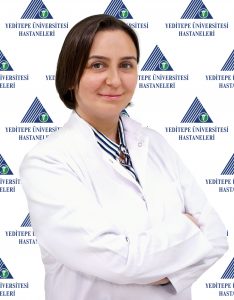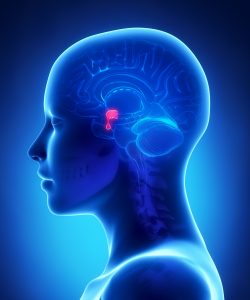Stating that the diagnosis of acromegaly is late, although there are very obvious symptoms and signs, Endocrinology and Metabolic Diseases Specialist Assoc. Dr. Özlem Haliloğlu pointed out that the time from the onset of symptoms to diagnosis is delayed by 5-10 years in studies. In this sense, he noted that social awareness should be increased and made important statements on the occasion of “Acromegaly Awareness Day”.
 Acromegaly, also commonly known as “growth disease”, can occur in children and adolescents or in adulthood. Acromegaly, a rare metabolic disease, usually occurs as a result of excessive secretion of growth hormone by a benign tumor originating from the pituitary gland. Endocrinology and Metabolic Diseases Specialist Assoc. Dr. Özlem Haliloğlu at Yeditepe University Kozyatağı Hospital pointed out that the risk of developing heart failure, high blood pressure, diabetes and some cancers increases due to the delay in the diagnosis of the disease.
Acromegaly, also commonly known as “growth disease”, can occur in children and adolescents or in adulthood. Acromegaly, a rare metabolic disease, usually occurs as a result of excessive secretion of growth hormone by a benign tumor originating from the pituitary gland. Endocrinology and Metabolic Diseases Specialist Assoc. Dr. Özlem Haliloğlu at Yeditepe University Kozyatağı Hospital pointed out that the risk of developing heart failure, high blood pressure, diabetes and some cancers increases due to the delay in the diagnosis of the disease.
If untreated, it shortens life expectancy.
Stating that excessive secretion of growth hormone seen in acromegaly causes important diseases in the body, Assoc. Dr. Özlem Haliloğlu said, “Enlargement in the heart, heart failure and cardiovascular diseases, high blood pressure, diabetes, cerebral vascular diseases are some of them. In addition, it has been shown that due to uncontrolled growth, an increase in the formation of thyroid nodules and polyps in the intestine, and the incidence of malignant tumors of the large intestine, breast and thyroid gland increase. For all these reasons, Assoc. Dr. Özlem Haliloğlu stated that although acromegaly disease has very distinctive symptoms and signs, studies can delay the diagnosis of the disease for 5-10 years from the onset of symptoms.”
Slow onset of findings delays diagnosis
Özlem Haliloğlu explained that the most important reason for late diagnosis is the slow progression of the disease and the slow emergence of symptoms, and that the patients and their relatives cannot notice the physical changes in particular, and gave the following information, she said, “One of the most effective ways to notice the symptoms is to look at old photos. Looking at old photographs, for example, major changes in the face can be clearly seen. However, patients apply to the physician in the relevant branches according to their complaints. For example, dentist for dental problems, ENT or pulmonologists for snoring problems, physical therapy or orthopedic specialists for joint problems. Therefore, it is important for physicians in this specialty to be aware of the symptoms and signs of acromegaly.”
 Rings are narrow, shoe size grows…
Rings are narrow, shoe size grows…
According to the information given by Assoc. Dr. Özlem Haliloğlu, excessive secretion of growth hormone causes excessive growth in tissues and organs in the body. If this excessive secretion develops in childhood and adolescence, when growth has not yet been completed and the elongation of the bones has not ended, excessive height growth (giantness) may develop in the patient. When this condition occurs in adulthood after the closure of the growth plates, it manifests itself with symptoms such as enlargement of the hands and feet and consequently narrow rings and an increase in shoe sizes.
Declaring that there were also changes in the physical appearance of the patient, Assoc. Dr. Özlem Haliloğlu continued her words as follows; Muscle-joint pain and excessive sweating are common. In addition, headache and visual disturbances may occur due to the pressure effect of the pituitary gland tumor.
Diagnosis is made by laboratory tests and imaging
Explaining that laboratory tests and imaging methods are used together for diagnosis in patients with suspected acromegaly, Assoc. Dr. Özlem Haliloğlu gave the following information, “First of all, the tests for insulin-like growth factor-1 (IGF-1), which is synthesized in the liver under the influence of growth hormone and growth hormone in the blood, are checked. If the IGF-1 level is found to be high, the glucose load test and the growth hormone level are evaluated to confirm the diagnosis. In addition to these examinations, MR imaging of the pituitary gland is performed to detect the tumor in which the hormone is secreted.”
Gold standard surgery in treatment
Recording that the first and gold standard treatment for patients whose acromegaly diagnosis is confirmed by laboratory and imaging tests is surgical removal of the tumor from the pituitary gland, Haliloğlu said:
“For patients with insufficient hormonal control after surgery, treatment methods such as radiotherapy or stereotactic radio surgery can be used in the tumor area in patients with acromegaly who cannot be controlled despite drug therapy and surgery. At this point, the important thing is to make the diagnosis on time. It is extremely important to increase social awareness for early diagnosis.”


